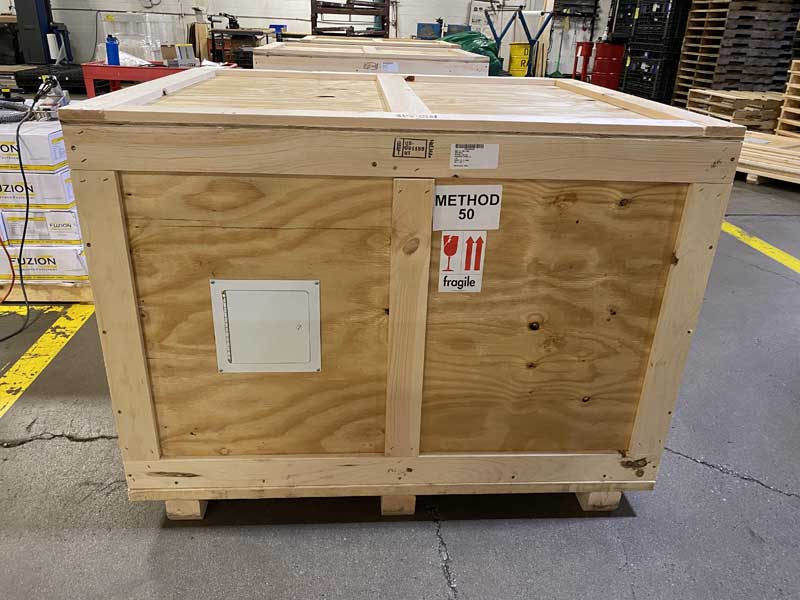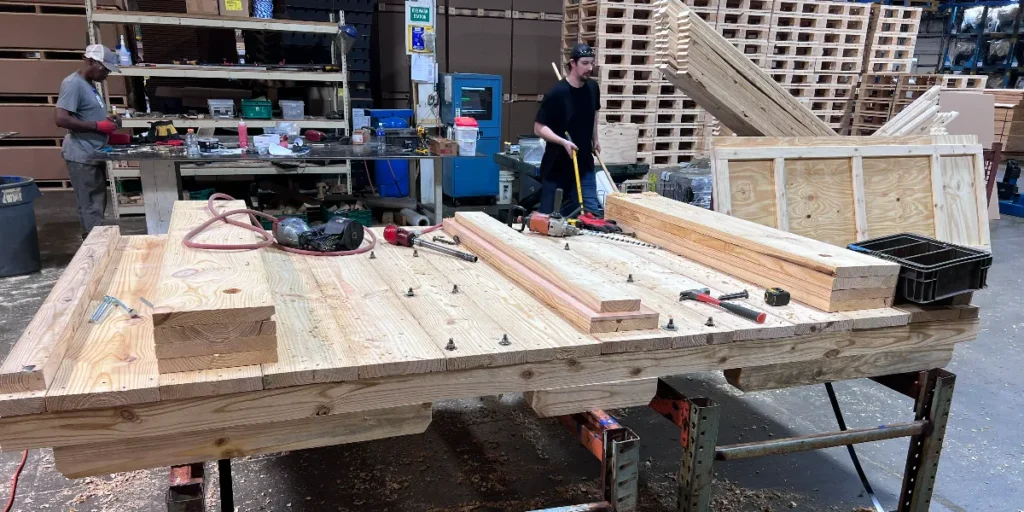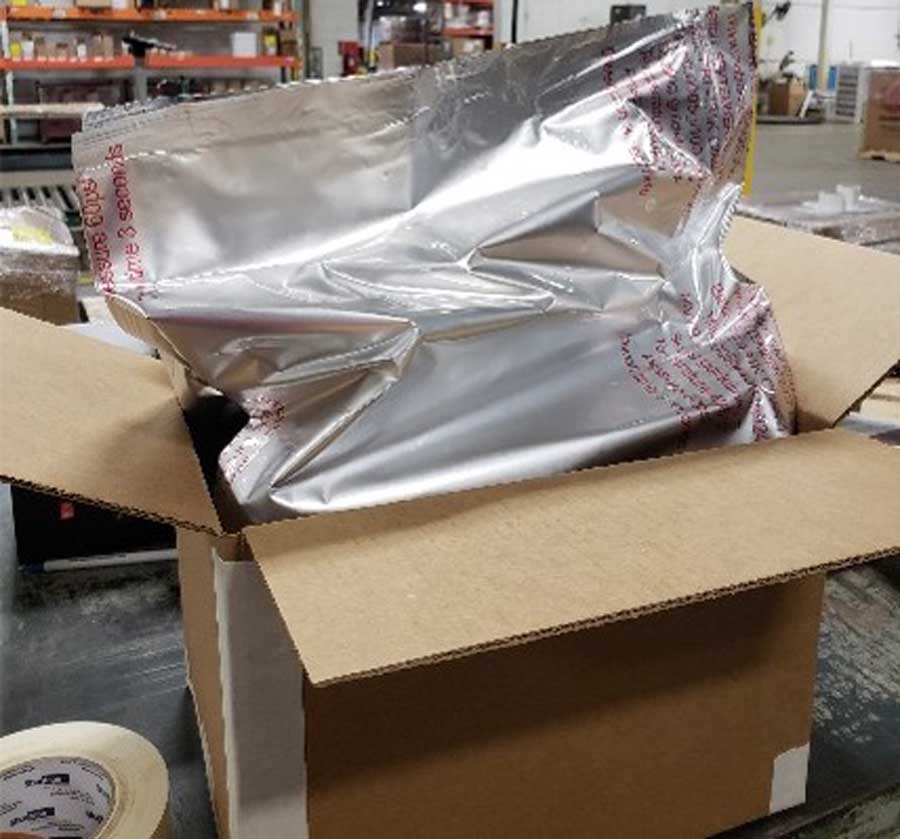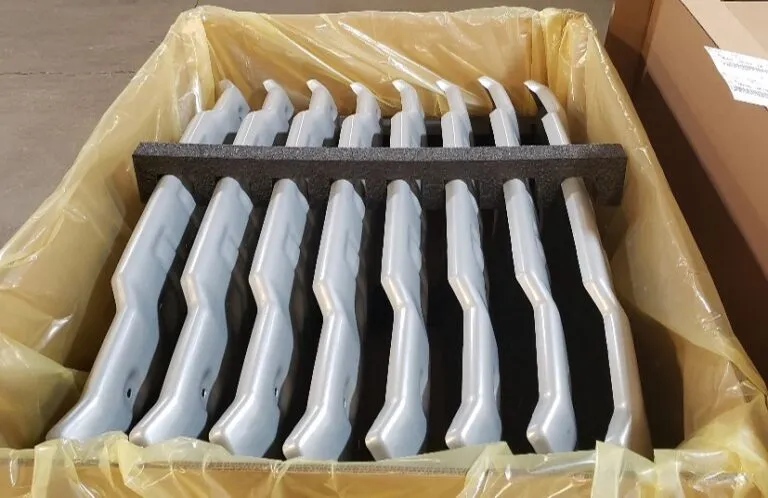How to Create an Effective Tertiary Packaging Design
Tertiary packaging directly impacts profitability more than any other packaging type. Learn more about the factors that influences its design.

Tertiary packaging directly impacts profitability more than any other packaging type. Learn more about the factors that influences its design.

There are three different types of packaging: primary, secondary, and tertiary. From a branding standpoint, primary packaging is always the main focus, while secondary packaging is often emphasized for shipping. However, tertiary packaging is one of the most critical types of packaging when transporting bulk shipments of any type of product. It’s the outermost layer of packaging designed to provide structural protection, prevent damage during long-distance transportation, and maximize storage density.
What many businesses don’t realize is that tertiary packaging directly impacts profitability more than any other packaging type for the same reasons stated above. Well-designed tertiary packaging reduces product loss due to damage, optimizes shipping efficiency by conforming to standard pallet sizes and container dimensions, thereby reducing transportation costs per unit, and speeds up loading and unloading processes, which also lowers labor costs.
So, how do you design a tertiary packaging solution that can deliver all these benefits?

The most effective tertiary packaging design perfectly accommodates the size, shape, and weight of the items being shipped by truck, plane, or boat.
Size determines the basic structure of the packaging. Large products require stronger structural frameworks, such as internal bracing systems and multi-wall construction, that can distribute the weight evenly. Size also determines whether products can be palletized in standard configurations. If the item doesn’t conform to standard dimensions, it creates wasted space, thereby increasing shipping costs.
Irregularly shaped products need custom-fitted solutions with void fill materials or molded inserts. If the items have sharp edges or protrusions, additional protective padding or orientation-specific packaging may be needed.
While weight also informs the structural framework of packaging, it also influences the number of units that can be safely packed together without impacting handling limits and shipping weight restrictions.
If you’re shipping large or irregularly shaped items, the design must balance protection requirements against cost and efficiency, so you may have to accept slightly higher material costs for better space utilization.

Tertiary packaging is most often constructed from corrugated cardboard, wood, or plastic. Corrugated cardboard is the most common material because it’s lightweight and cost-effective, but wood is essential for heavy-duty applications and plastic for items that need exceptional moisture resistance.
Like most packaging design factors, it’s all a balance. With material selection, you must balance the upfront costs of those materials with the type of protection required for the item based on industry specifications (e.g., military/defense), the transportation mode, and how long the item is expected to be in storage.
Corrugated cardboard is often used in truck transportation because it’s cost-efficient and provides adequate protection over shorter distances. It’s also commonly used in air transport because it’s lightweight, which helps improve fuel efficiency; however, the material thickness may need to be increased to provide extra protection against air pressure changes. However, for boat transport, treated wood or plastic is often the preferred choice because standard corrugated materials will degrade in marine environments. Wood and plastic also have significantly higher stacking strength than corrugated cardboard, which is a critical factor as most shipments in boats must be stacked to save space.

One of the most crucial parts of a packaging design is understanding any regulations for the shipment, as these must be accounted for when developing the design and also when labeling the packaging before shipment.
There are too many regulations to list here, but some include:
If you don’t account for these regulations when designing tertiary packaging, you risk shipping delays, added repackaging costs, and sometimes penalties.
One of the best ways to avoid these issues is to work with a packaging engineer with experience in your specific industry.
Creating the right tertiary packaging design can be challenging. That’s why Export Corporation is here to help.
For over 80 years, we’ve designed and built custom tertiary packaging for customers in the automotive, defense/military, and commercial sectors. To ensure quality and compliance, we comply with ISO 9001:2015 standards, use FMEA (Failure Mode and Effects Analysis) to identify potential failures in the design, and perform comprehensive testing to ensure our packaging solutions meet application requirements. We also hold an ISPM-15 certification and ITAR and SAM registrations.
Please contact us today to learn more about our capabilities or to request a quote.

Send us details about a packaging project you need, and a member of our expert team will be in touch.